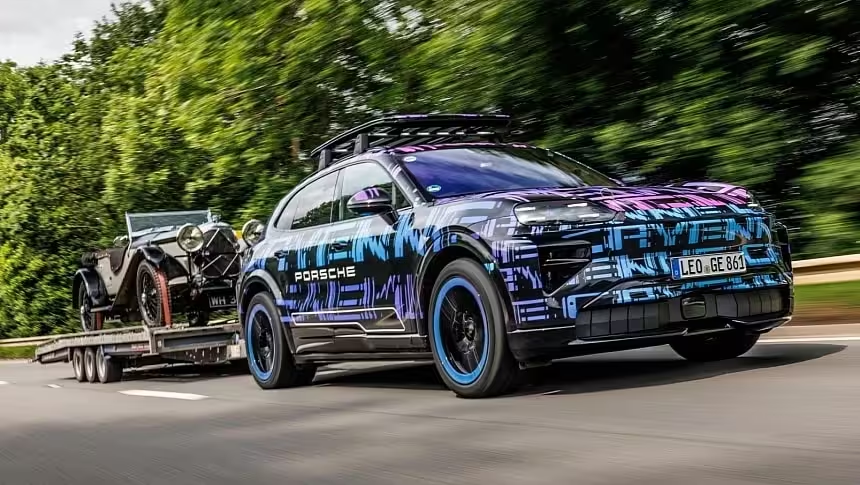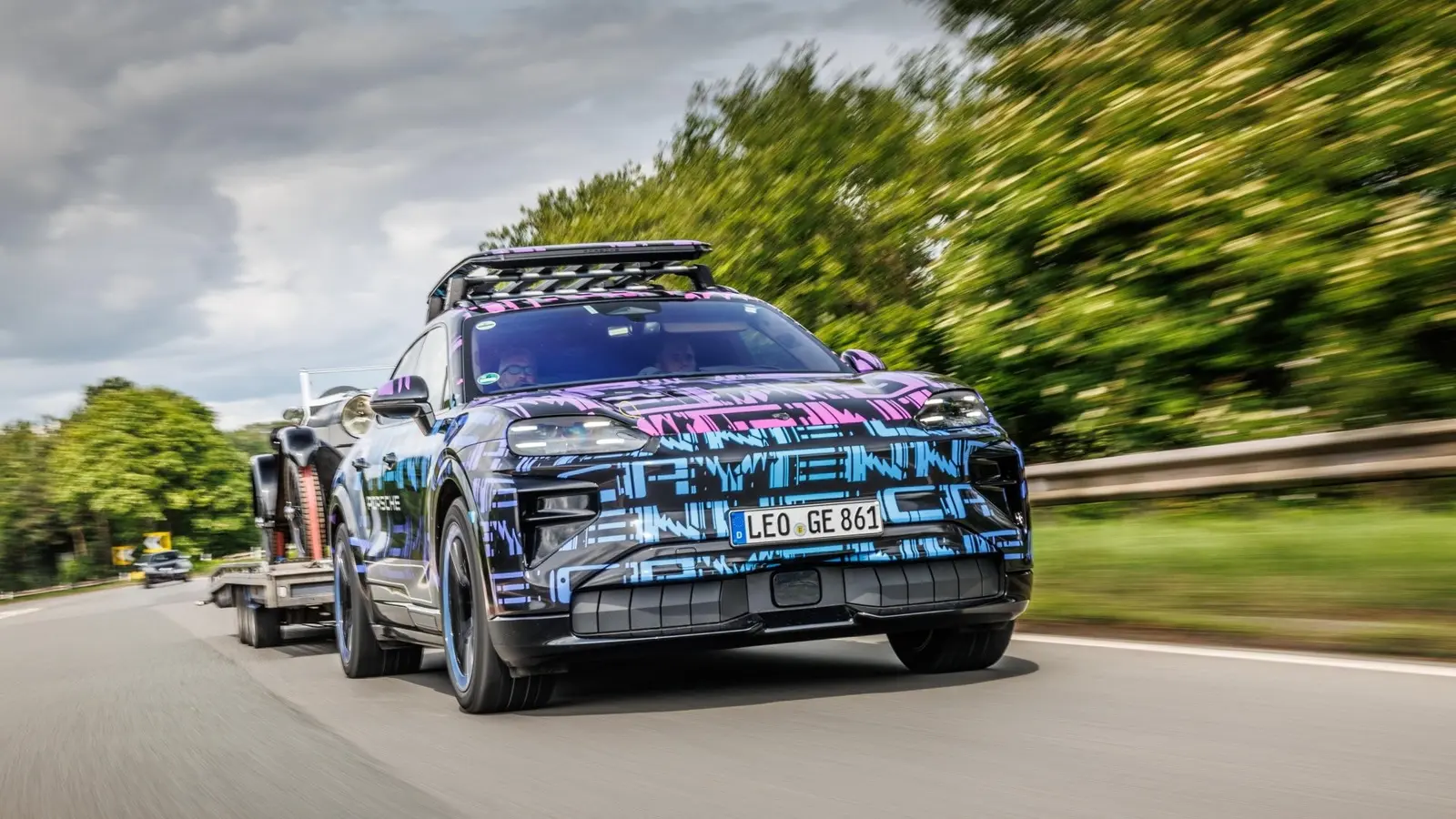5 Minutes
Thomas Majchrzak of Autogefuehl has had early access to Porsche’s first fully electric Cayenne, and his in-depth 23-minute review reveals some headline-making figures. The top Turbo Electric variant is rated at just over 1,000 metric horsepower (around 986 mechanical hp), putting the 2026 Cayenne Electric squarely into high-performance EV SUV territory.
Model Range and Market Positioning
Porsche plans to launch the new Cayenne Electric with three distinct trims in the first year: the base Cayenne Electric, a mid-level Cayenne S, and the flagship Cayenne Turbo Electric. All three versions use a dual-motor, all-wheel-drive layout and are aimed at buyers who want a premium, performance-focused electric SUV that competes with other luxury EVs on range, technology and towing capability.
Powertrain and Technical Architecture
Both motors in the Cayenne Electric are specialist designs: a Bosch-developed permanent magnet synchronous motor for the front axle and a Porsche-designed motor at the rear. Like the all-wheel-drive Taycan, the rear motor uses a two-speed gearbox to optimize off-the-line acceleration and sustain high-speed efficiency.
The platform is Porsche’s Premium Platform Electric (PPE), shared with the Macan Electric, and the battery pack uses LG-manufactured pouch cells. Porsche and LG developed a new nickel-manganese-cobalt (NMC) cell design specifically for this application, differing in form factor from the cells used in the Macan Electric and Taycan.
Battery, Range and Charging
The Cayenne Electric is equipped with a 108 kWh battery pack. Under WLTP testing it's expected to exceed 600 kilometers (around 373 miles) of range. In the U.S., EPA figures for the longest-range spec are likely nearer to 300 miles (roughly 483 kilometers), which is comparable to the Macan 4 Electric’s published estimates.
The Cayenne benefits from an 800-volt electrical architecture that enables fast recharging: up to 22 kW on AC and up to 400 kW on DC. Porsche claims a 10–80% DC charge in about 16 minutes under optimal conditions. For North America, Cayenne Electric models will ship with a NACS charging port. Like the Macan Electric, the Cayenne can also operate in 400-volt DC charging mode by splitting the 800-volt battery into two 400-volt banks, increasing charger compatibility.

Performance and Dynamics
The Turbo Electric is the halo model: more than 1,000 metric horsepower, a top speed exceeding 250 km/h (155 mph) and a 0–100 km/h (0–62 mph) sprint in under 3 seconds are claimed. Porsche also asserts the Turbo can reach 200 km/h (124 mph) from a standstill in under 10 seconds. To help manage heat under sustained loads, both the Cayenne S and Turbo specification feature internal oil cooling located between the motor rotor and stator.
Chassis and Handling
Ride and handling are supported by standard air suspension, with Porsche Active Ride available as an option for improved body control and comfort. Rear-axle steering is offered to enhance maneuverability at low speeds and stability at highway pace. Thanks to a slightly longer body than the combustion Cayenne, passengers gain additional rear legroom and luggage capacity.
Design Highlights and Unique Features
Visually, Porsche has retained Cayenne’s muscular proportions while refining aerodynamics for EV efficiency. On the Turbo Electric, aerodynamics are further enhanced by deployable sideblades that extend from the rear haunches at 60 km/h (37 mph). Those active elements, combined with underbody optimization, help balance cooling needs and drag reduction.
Practicality: Dimensions, Towing and Cargo
The electric Cayenne is believed to measure about 4,979 millimeters in length and is rated to tow up to 3,500 kilograms (7,716 pounds) when properly equipped — a useful capability for buyers who need genuine hauling capacity from a luxury electric SUV.

How the Cayenne Electric Compares
Against rivals and Porsche’s own Macan Electric, the Cayenne Electric brings a higher level of passenger space, towing capability and outright power in the Turbo trim. The Macan 4 Electric lists slightly different range numbers depending on market test cycles, but the Cayenne’s larger battery and focus on range and towing make it the more practical long-distance EV for families who also want sports-car performance.
Summary
The 2026 Porsche Cayenne Electric marries the brand’s performance DNA with modern EV architecture: an 800-volt system, a new 108 kWh LG pouch-cell battery, ultra-fast DC charging, dual-motor all-wheel drive and headline-grabbing power from the Turbo variant. With premium suspension tech, active aerodynamic elements and competitive range estimates, it’s positioned as a flagship electric SUV for buyers who demand speed, luxury and real-world utility.
Source: autoevolution


Leave a Comment